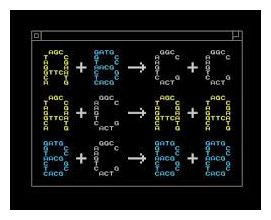Chemists will be able to make the DNA work according to their wish by using a set of codes or instructions to program the DNA accordingly. Scientists will be able to make the DNA interact or work in a test tube.
A crack team of researchers from the University of Washington are trying to perfect a programming language which can guide the outcome or the mechanism of chemical reaction mixtures somewhat akin to the way programming in an electronic chip guide the automobiles, robots, aircrafts etc.
Such a system will have immense use in medicine where for the first time a dosage regimen can be programmed based on different symptom parameters.
The finding was published online this week in Nature Nanotechnology.
Chemists since ancient times have tried to understand the process of chemical reactions which are governed by a set of variable factors. These factors affect the flow of the reaction. The UW engineers also write the programs that direct the movement of synthetically created molecules. .
The human body is a complex machine and DNA acts as program chart and different proteins are created on the set of instructions which are coded on the DNA. Scientists now are finding ways to design synthetic systems that behave like biological ones with the hope that synthetic molecules could support the body's natural functions.Author Georg Seelig, a UW assistant professor of electrical engineering and of computer science and engineering said, "We start from an abstract, mathematical description of a chemical system, and then use DNA to build the molecules that realize the desired dynamics. The vision is that eventually, you can use this technology to build general-purpose tools."
To that end, a system is needed to create synthetic DNA molecules that vary according to their specific functions.




'The human body is a complex machine and DNA acts as program chart and different proteins are created on the set of instructions which are coded on the DNA.'
It may be more complex than this because at the start of the numan genome project they estimated the number of human genes possible between 100,000 and 2 million: turned out to be 20,000: 'and there isn't enough data storage in 20,000 genes to hold a blueprint for a human being. There are roughly 3 billion base pairs in the human genome, this equates to roughly about 750MB of data storage capacity.' It seems what they (UW) are trying to do; program a sequence, is a simplistic, mechanistic approach to the understanding of genes.
Read more at the link
[Link]